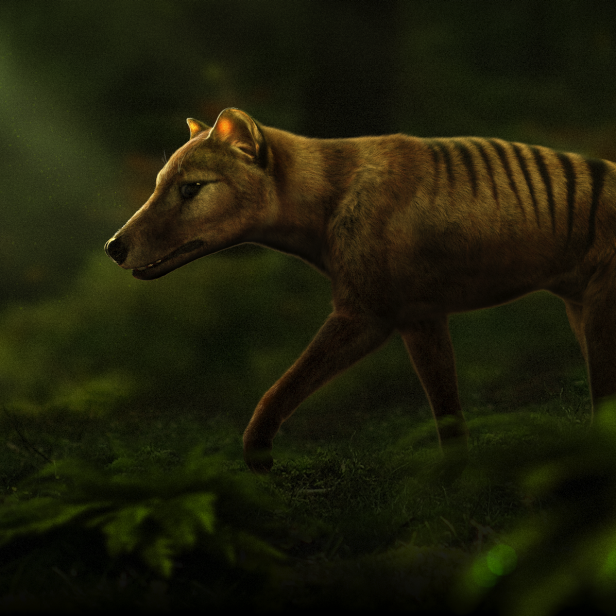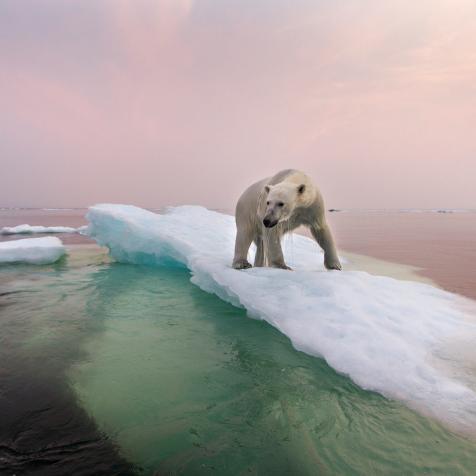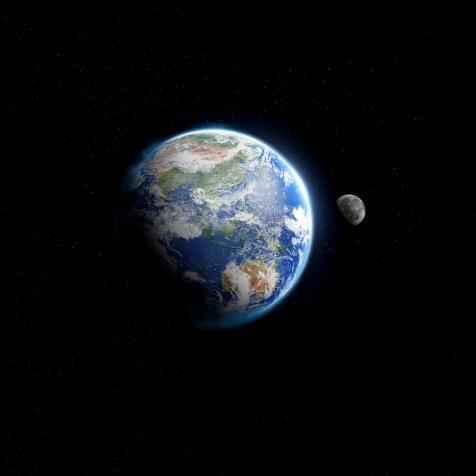
Colossal
Scientists Are Resurrecting the Tasmanian Tiger from Extinction
Colossal Biosciences has announced it has begun work on the de-extinction of the thylacine, an iconic Australian marsupial eradicated by human hunting in 1936. Learn how they plan to do it in an exclusive interview with marsupial evolutionary biologist Andrew Pask Ph.D. and Colossal Co-Founder Ben Lamm.
Tasmanian tigers have been gone for almost a century but one genetic engineering and de-extinction company is on a mission to change that. Known more commonly as the Tasmanian tiger, the keystone species is not a tiger at all, but a carnivorous marsupial native to Australia, Tasmania, and New Guinea also known as a thylacine.
Tasmanian and broader Australian ecosystems have suffered biodiversity loss and ecosystem degradation since the species was driven to extinction by human hunting almost a century ago. Australia has one of the highest mammalian extinction rates in the world and losing an apex predator can trigger waves of environmental harm which can lead to the spread of disease, increasing wildfires and invasive species, and a disruption to natural biogeochemical cycles.
The development of technology used to de-extinct Tasmanian tiger will also aid in the preservation of all marsupials around the world, which are highly susceptible to rising rates of biodiversity loss in Australia. The successful birth of a thylacine will introduce new marsupial-assisted reproductive technology which can aid in other marsupial conservation efforts.

Colossal
This is the second de-extinction project from Colossal, which announced plans to restore the woolly mammoth to the Arctic Tundra in September 2021.
Tasmanian tiger expert Andrew Pask Ph.D and Ben Lamm, Colossal Co-Founder and CEO talked to Discovery to explain their groundbreaking plan to bring Tasmanian tigers back into balance with the broader Australian ecosystems.
What is de-extinction and how do you do it?
PASK: "De-Extinction is distinct from cloning in that we don’t have a living cell (from our extinct animal) to start the process. So in this case we have to look for the closest living relative to serve as a host for bringing back our extinct species. In the case of the thylacine this is the fat tailed dunnart, a mouse-sized carnivorous marsupial. We then sequence the genomes of our extinct animal and the closest relative and compare them. We then take living cells from our dunnart and edit their DNA every place where it differs from the thylacine. We are essentially engineering our dunnart cell to become a Tasmanian tiger cell. Then we use standard stem cell and reproductive techniques to turn that cell back into a living animal. Our ultimate goal with this technology is to restore these species to the wild where they played absolutely essential roles in the ecosystem. So our ultimate hope is that you would be seeing them in the Tasmanian bushland again one day."
LAMM: "Our goals are to get as close as possible to the original extinct species in terms of its size, shape and behaviour. I have seen some people argue the word "de-extinction" over the last few years and in my opinion, people should be less concerned with the semantics of the word “de-extinction” and more concerned with developing tools to rapidly advance conservation and save species. The technologies we are developing have massive applications to conservation. We are also bringing back genes and phenotypes that were extinct. If you create a proxy species that has all the phenotypic traits you are looking for, how is that not de-extinction if the resulting proxy animal fills the ecological void that was created with its absence?"
Who benefits from de-extinction?
LAMM: "In addition to the local ecosystems, the broader conservation community also benefits from de-extinction work. In addition to the benefits of rewilding and helping to balance an ecosystem that mankind had a hand in its degradation, Colossal is developing marsupial-focused conservation and gestational technologies that will support broader marsupial conservation efforts. For example, we are developing an exo-pouch that the joeys will further develop in post birth. The exo-pouches can be utilized for existing marsupial species such as the Tasmanian devil. The Tasmanian devil gives birth to 20 or 30 joeys. However, the mother has only four nipples, so only a handful of babies survive. Our exo-pouch we are developing for the thylacine project could be incredibly helpful to conservationists working with the Tasmanian devils to take those additional 20+ joeys and give them a place to incubate further. In addition, Colossal is working on full-stage artificial wombs that can help in full ex-utero development all the way from embryos. These gestational technologies alone will be transformational for marsupial conservation."
PASK: "Humans are rapidly changing the environment. Global temperatures are rising, adverse weather events (such as the devastating bushfire in Australia in the past few years) are predicted to increase in frequency and severity and we are introducing pest species all over the planet. Unless we step in to help these species, we will lose vast amounts of biodiversity. The technologies we are developing to de-extinct the thylacine all have immediate conservation benefits – right now – to protect marsupial species. Biobanks of frozen tissue from living marsupial populations have been collected to protect against extinction from fires. However, we still lack the technology to take that tissue – create marsupial stem cells – and then turn those cells into a living animal. That is the technology we will develop as a part of this project. Even genome editing has the ability to help protect marsupials against invasive pest species or increase genetic diversity and population health."
What are the methods of de-extinction?
PASK: "We still can't create life from dead cells. So in any de-extinction project, the aim is to get as close to the extinct animal as possible through editing the genome of living cells from its closest living relative. One of the key resources for this work is a good genome from your extinct species. Because the thylacine is a relatively recent extinction, there are many samples in museum collections and the DNA is quite intact, enabling us to build an excellent blueprint of the thylacine. We are also working very hard to identify key regions of the thylacines genetic code that were essential for its unique development. This developmental and functional work is now being assisted by the outstanding computational biology and gene editing teams at colossal to build our thylacine genome. One of the things TIGRR lab and Colossal are most excited about is the amazing conservation resources that this project will create for currently threatened or endangered marsupial species."
Why choose to bring back the Tasmanian tiger?
LAMM: "From a Colossal perspective, we are interested in pursuing de-extinction projects where the reintroduction of the restored species can fill an ecological void that was created when the species went extinct and help restore the degraded ecosystem. Now that the mammoth team is fully staffed and making great progress, we started to look for our second species to pursue. After getting introduced to Dr. Pask and seeing his work on the Tasmanian tiger as well as weighing the benefits for its de-extinction, we were excited to collaborate with him and University of Melbourne to help bring back a proxy for the thylacine. The thylacine is a great candidate for de-extinction because it only went extinct in 1936 due to human hunting and the ecosystem we are looking to return it to is still intact. Furthermore, we have incredible tissue samples and genomes assembled as well as many additional pelts that are being sequenced for population genomics studies. Pask's over a decade work on the thylacine makes him (and his lab) the best subject matter expert we could have ever hoped for on the project. Lastly, we are excited about how our work on the thylacine will lead to marsupial-focused conservation and gestational technologies that we weren't pursuing before starting on the project."
PASK: "The tassie devil facial virus is a classic example of what can happen when an ecosystem becomes unbalanced by the loss of an apex predator. The ripple of these impacts across the ecosystem are immeasurable, but the rewilding of the wolves into Yellowstone has shown us just how vital and complex some of these interactions can be. In the case of returning the wolf, not only did it impact the mammals in the system but also the vegetation right the way through to changing the course of rivers in the valley. These animals hold pivotal positions in an ecosystem and when no other animal can replace that niche the effects are profound. In Tasmania, it's only been 100 years or so since there was a population of thylacines in the ecosystem so we hope we can restore them before too much damage is done."
PASK: "The Tasmanian tiger is the only marsupial apex predator that lived in modern times – so there are not any other native species that could replace it. It's very difficult to predict what a non-native predator might do to the ecosystem which is why species introductions into new habitats can lead to ecological disasters. The best thing we can do to protect our ecosystems is to prevent species extinctions. But where a corner-stone species has been lost from that environment, the next best thing we can do is try to bring that animal back."
When might we see Tasmanian tigers again?
LAMM: "We have been pretty vocal about our ambitious goals to get our first mammoth calves in the next five to six years. While we aren't announcing a timeline yet for the thylacine, the gestational time for marsupials is measured in weeks compared to 22 months with elephants. A large part of our mammoth timeline is based on the nearly two year gestation of the calves. I think it is safe to assume that the thylacine proxy could be one of the first animals to be brought back."
What are the disadvantages of de-extinction?
PASK: "In the case of the thylacine, the benefits of returning this species would far outweigh any potential risks. Any release such as this requires studying the animal and its interaction in the ecosystem over many seasons and in large areas of enclosed land before you would consider a complete rewilding. The impacts of the loss of the thylacine can already be seen with the rapid spread of new diseases like the Tasmanian devil facial tumor disease which almost led to the extinction of another marsupial species. We would strongly advocate that first and foremost we need to protect our biodiversity from further extinctions, but unfortunately we are not seeing a slowing down in species loss. This technology offers a chance to correct this and could be applied in exceptional circumstances where cornerstone species have been lost – to help prevent further damage to the ecosystem."

Colossal
Are there any other species you want to bring back?
LAMM: "Right now we are exclusively focused on the Woolly Mammoth and Thylacine de-extinction projects. As we make progress on these two projects, we will constantly evaluate other species where de-extinction efforts can create a positive impact on a degraded ecosystem and advance conservation science."


















